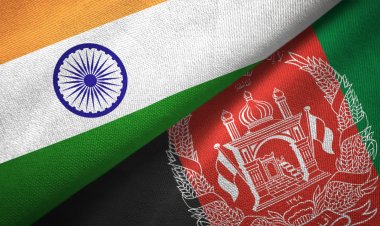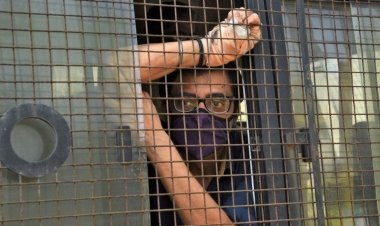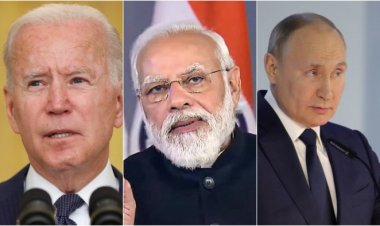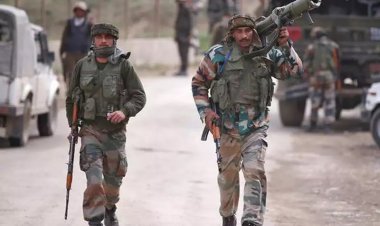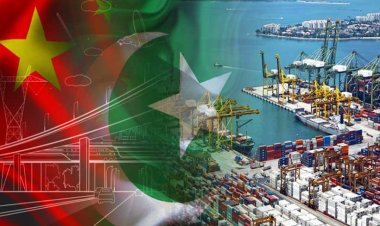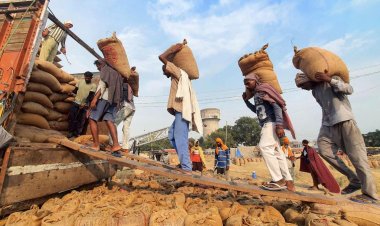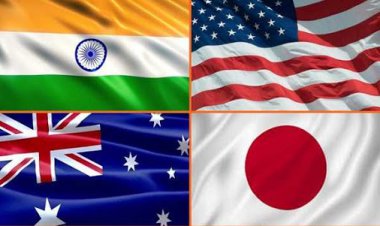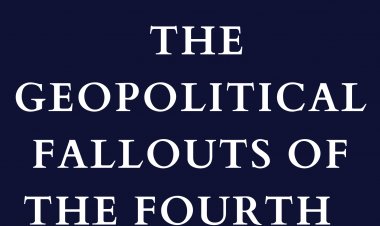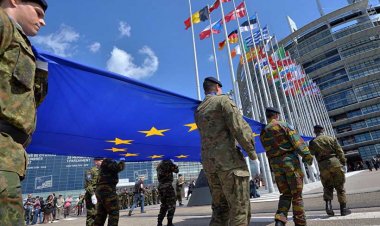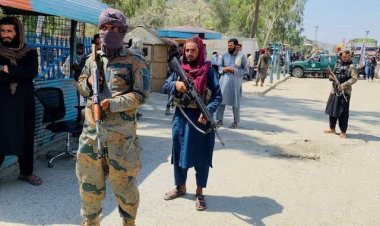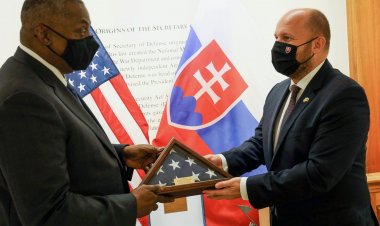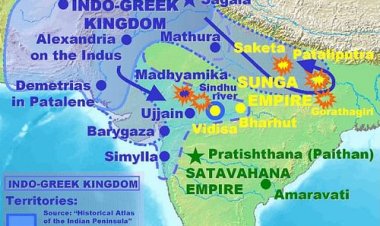Dissecting Pakistan’s Terror Infrastructure in Jammu and Kashmir
June 8, 2020 at 12:00 PM IST
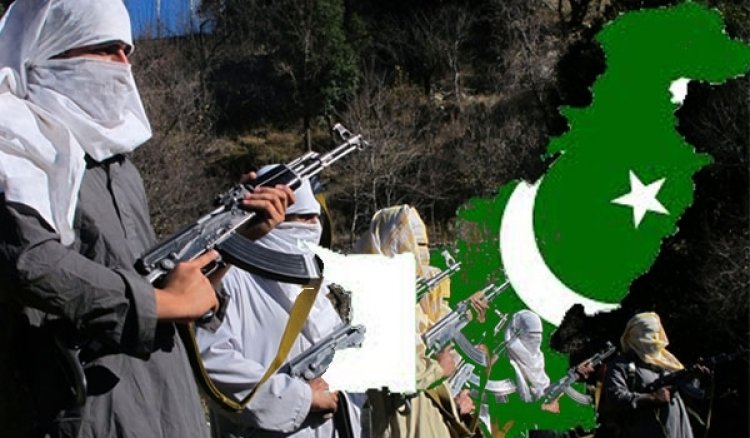
Event Report
Webinar No. 1
By Usanas Foundation
Panelists:
- Madhav Nalapat, Editorial Director of ITV Network and Sunday Guardian and UNESCO Peace Chair, Manipal Academy of Higher Education
- Tara Kartha, Strategic Affairs Expert, formerly at National Security Council Secretariat and Randolph Jennings Fellow at USI
- Major (Retd.) Gaurav Arya, Indian Army veteran, Consulting Editor at Republic TV, and the host of the TV show “Patriot.”
- Moderator: Abhinav Pandya, Strategic Affairs Expert, author of “Radicalization in India: An Exploration,” and CEO, Usanas Foundation
The event commenced at noon and ended at 01:50 PM IST. Mr. NC Bipindra, a defense expert from Usanas Foundation, hosted the event. About 85 participants from India and various parts of the world attended the event. The participants included aware citizens, Non-Resident Indians, and foreign nationals from diverse age-groups and professional backgrounds such as engineering, diplomatic services, business, academics, and management. Young students from colleges, schools, and universities also participated. Participants also included police officers and army officers Mr. Abhinav Pandya introduced the panelists and the topic of the discussion. He stated that Pakistan has over the last 70 and, in particular, the last 30 years built and nurtured and complex, multi-layered, and multi-dimensional terror infrastructure in Jammu and Kashmir. Its different elements include the Islamist organizations like Jamaat-i-Islami helping the terrorist groups with logistics and finance, extremist clerics radicalizing the youth, and the media outlets creating an anti-India narrative. Hence, the kinetic approach alone cannot be the solution. The terror infrastructure needs to be understood with all its nuances to arrive at a robust strategy to deal with militancy.
The panelists shared the following views-
Mr. Madhav Nalapat-
India’s today’s situation in Kashmir is much better as compared to the situation in the 1990s when the Gulf countries, Europe, and the United States had a visible pro-Pak tilt on the Kashmir issue. Kashmir witnessed the forced exodus of Kashmiri pundits at the hands of Pak-sponsored jihadi terrorists and extremists and terrorization of the moderate segments of the majority Muslim population. Delhi responded with a phase of kinetic action followed by a long phase of inaction or confusion. One could say that Delhi lacked a systematic and decisive policy towards Kashmir, and the situation was allowed to fester. Half-hearted and partial implementation of ill-conceived policies was bound to backfire and develop ways of surviving the onslaught. Hence, the conflict survived as Delhi never took its action to the final stage, be it a political action plan or a strong military offensive. Unlike, in Punjab, the policy was firm, clear, and decisive, and it brought results by putting an end to the Khalistan militancy.
The PDP-BJP alliance was uncalled for, and it did not improve the situation at the ground level. Pakistan, in its sabotage-agenda, no longer looks at Kashmir only. In the last five-six years, Pakistan has shifted its focus on the entire country. It intends to foment communal riots, fuel Islamist extremism, support extremist organizations, and exploit all the possible faultlines to rupture the Indian social and political fabric. What we see in Kashmir is just a microcosm of what is intended for the entire country.
Further, India never learned lessons from the past. Mr. Nalapat gave the example of IPKF to explain his point. IPKF failed because an influential political leader of Sri Lanka was helping the LTTE, and it all happened in the full knowledge of India. Later, Indian politicians treated IPKF in a highly dishonorable way. It is quite similar to the way Ihwanis, the local Kashmiris who took arms against Pakistan-Sponsered foreign terrorists in the 1990s, were treated later. The militants killed many Ikhwanis. Delhi failed to protect its flag-bearers in Kashmir.
China and Pakistan are intricately linked. There is a strong possibility of a coordinated and networked action either on the Kashmir front or other fronts.
In the information domain, India is lagging despite having a robust civil society vis-a-vis Pakistan and China. They need to come out stronger. On the information front, the government seriously needs to counter the fake propaganda. They should start by sharing the authentic data with the civil society stakeholders who can raise the voice and counter Pakistan’s fake information campaign.
85 % of people in Kashmir are not Wahhabis. Delhi must bring them along to counter radicalization. Further, there is no solution to Kashmir without taking the PoK back. India also needs to extend moral and diplomatic support to Sindhis, Baluch movements, and Pashtun movements. Lastly, Kashmir policy needs to be on a firm footing, i.e., zigs and zags must be done away with.
Dr. Tara Kartha
Pakistan is operating terror infrastructure in many countries- India- Administered Kashmir, PoK, Gilgit-Baltistan, Baluchistan, Afghanistan, and Iran. Despite this, no one raises these issues, and world powers like the US are friends with them. They have dominated the discourse and narrative on Kashmir. There is tons of data on Kashmir valley, but almost zero information on PoK, G-B, and Baluchistan. India needs to push its narrative instead of being defensive.
In the US, within the government, people have a clear idea about the role of Pakistan in abetting terror in Kashmir. However, in the NGO, thinktank, and civil society circles, Pakistan’s proxy Islamist organizations are very active in disseminating false narratives. After the abrogation of article 370, several Pakistanis, including the PM of PoK have visited Washinton DC think tank circles to mislead them on Kashmir. They are mobilizing support in the US by portraying India as the violator of human rights and minority rights. However, Pakistan is also getting exposed to the western world and finding it challenging to make its story acceptable. Nevertheless, India needs to put in efforts to disseminate the right information to counter Pakistan’s fake propaganda.
Pakistan is in a terrible situation because of the FATF pressure, Baluchistan, Sindh, and Pashtun issues. Though hardly any news comes out, the situation is dire for them. The internal difficulties are also partly the reasons for the reduction in the number of foreign terrorists coming from Pakistan. The number of terror camps in PoK has come down from 42 to 18. However, the UN reports say that there are 10,000 Pakistan cadres in Afghanistan associated with different terrorist groups.
The government needs to share information with experts, civil society, and think tanks. Instead of being defensive, Indians must discuss PoK, G-B, and Balushictan and expose Pakistan’s heinous crimes against humanity. Intelligence agencies can not speak about these issues. It is the civil society and the intellectual community which needs to get into action.
Many politicians in Pakistan want peace with India. However, a tiny section of Pakistan’s military and bureaucratic establishment wants to sustain this conflict and have a firm grip on the internal polity. They are a small segment, but they are efficient. India must convince the world community to take action against this dangerous section of Pakistan’s establishment.
Major (Retd.) Gaurav Arya
- India does not have a Kashmir policy. It fluctuates very often and there is a tendency to lay too much emphasis on the intellectual gymnastics. There has to be a clear and decisive policy.
- Radicalization is a major challenge in today’s Kashmir. In Anantnag district, there are 500 madrasas out of which 138 belong to the extremist Jamaat-i-Islami. They are continuing even after the ban on Jamaat. The condition is so bad that a five-year-old girl told me that when I would grow up I will raise children teaching them jihad. Indian army cannot fight a five-year-old girl. Pakistan has poisoned the minds with an extremist narrative through its networks of maulvis and madrasas. These days there are many Deobandi clerics from UP who are actively disseminating radical teachings in Kashmir.
- In the 1990s, there used to be 15,000 to 20,000 terrorists, including many Afghans. Today it is incredibly difficult for Pakistan to send foreign terrorists (FTs) because of the reliable counter-infiltration grid. To overcome this, Pakistan has used the internet as a weapon to radicalize the local Kashmiri youth. Burhan Wani, Sameer Tiger, and Riyaz Naikoo were Kashmiris.
- The fear of the Indian army has taken a hit. Maybe the phenomenon of stone pelting is the result. The policy of engaging the army in Sadbhawna (welfare) operations and counter-insurgency simultaneously is bad. The army is meant for counter-insurgency, and it should be employed in that only.
- Pakistan will not stop at Kashmir only; they will come for Punjab, Kerala and other states. It is an ideological and existential battle for Pakistan.
- Delhi’s approach has been fallacious. The problem originates in Pakistan and India seeks a solution in Kashmir. For Pakistan, it is no loss if the Indian army kills some ill-trained terrorists. To inflict real damage, India should conduct cross border operations and neutralize its army personnel. Masood Azhar, Hafiz Saed are not the real enemies. It is the Pak army, which is the real threat.
- Delhi’s kinetic measures have been half-hearted. Without going full-fledged against them, we start appeasing the separatists. Money was paid to Geelani. Syed Salahuddin's sons are in the government service. If India is not confident of its own strategy and approach, no other country can be expected to support India.
- China is keeping India busy in Kashmir and strengthening its navy in the Indian ocean.
Solutions- Diplomatic offensive, strong information warfare against Pakistan, and tough action against Pak army.
Dr. Gautam Sen, an eminent strategi affairs expert, joined as a guest and shared his views. He has also been associated with Nationa Security Council Secretariat
- Terrorism is a darker side of globalization. It originates from the identity crisis.
- India’s problem is that the policy-makers do not approach the issue from a clear perspective. While deliberating on a public policy challenge like terrorism, there is a geopolitical angle, decision-making angle, and issues about disseminating the information. Nuanced analysis needs differentiating between these different aspects.
- Another issue in Indian security set-up is that there is an insane level of compartmentalization. People work in silos. Even at the top decision-making level, they do not exchange thoughts and information. The government needs to make reports and findings of its various commissions public so that the intellectual community can use it.
- There is a need to bridge the gap between the realm of ideas and policymaking. Subject experts should be involved properly. The culture of borrowing ideas and using them for individual advancement is detrimental to the healthy growth of security infrastructure in the country. Isolationism must stop, and transparency needs to be brought in.
- Lastly, we need a clear and decisive defense policy. Only then can one do any systematic strategic analysis. Every country spells out its defense policy through white papers and other official releases. India should do it soon.
Mr. CD Sahay, former secretary to the government of India and currently associated with Vivekananda International Foundation, India’s premier security think tank, also joined as a guest. He shared the following views-
- The 1990s were the worst days of militancy. Since then, India has come a long way. In those days, it was difficult to act even if there was a precise intelligence. Today the militants are on the run. In terms of security parameters, India has come out immensely successful.
- In 1996, as per the finding of India’s intelligence agencies, there were 121 terrorist camps in PoK. They were of different types-logistical, base, launching, and holding. All of them were within the range of one to two km of the location of the Pak rangers. Today, especially after surgical strikes and the Baalkot air raids, Pakistan fears retaliation. The number of camps has significantly come down.
- Diplomatically also, India is much more powerful, with many more friends.
Conclusion-
On the basis of the discussions held in the webinar, one can conclude that-
- The worst days of militancy were in the 1990s. Today, India is much more powerful on all fronts.
- India implemented half-hearted policies without ever taking them to fruition. Such an approach developed strong immunity, and the conflict thrived.
- Religious radicalization is a major challenge. It is impacting even the children. The army cannot fight that. It needs to be countered with an alternate narrative.
- India needs a long-term strategic vision for Kashmir. to seriously think about PoK in the overall framework of Kashmir policy
- China and Pakistan have developed an intricate relationship that will have an impact on the Kashmir also.
- India needs to counter Pakistan’s information warfare. Fake news must be met with the correct information. India needs to reach out to civil society groups, NGOs, and politicians in the western world to dispel the lies spread by Pakistan.
- The security establishment needs to get rid of the mindset of working in silos. The new approach must believe in the exchange of thoughts. The government needs to share data with people. Secrecy has gone to irrational levels, which is harming the long-term national interests and the credibility of the state.
The opinions expressed in the webinar belong to the panellists and not necessarily to the Usanas Foundation.


